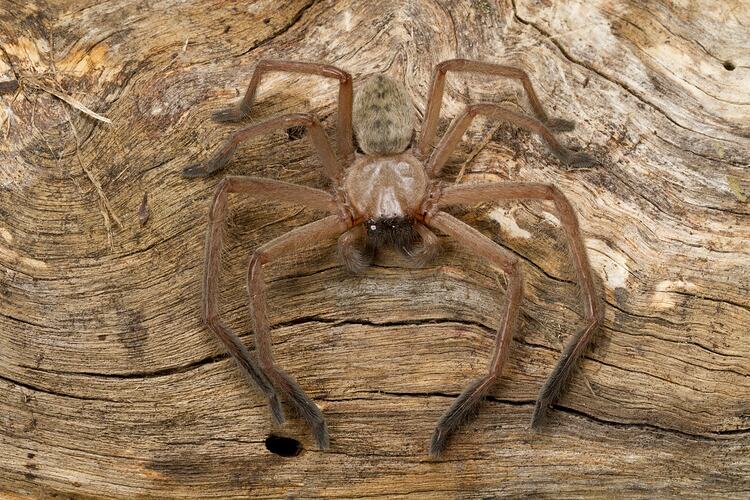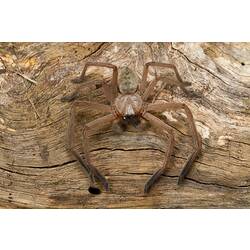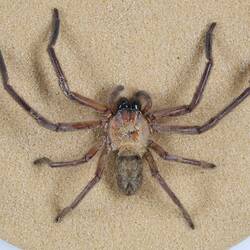General Description
Spider very flattened with a red-brown cephalothorax and a grey-brown abdomen. Front legs longer than the back legs. Ends of legs dark brown to black. Body up to 2 cm long (male), 4 cm long (female).
Biology
Social Huntsmen live in groups, usually several females with young spiders. They feed on insects and other invertebrates. They are the largest huntsman in Australia and live for about 2 years.
Distribution
South-western and eastern mainland Australia and Tasmania.
Habitat
Inside houses, under bark and woodpiles, in cracks and crevices of trees or stumps.
More Information
-
Animal Type
-
Animal SubType
-
Brief Id
Brown flat body, dark tips of legs.
-
Colours
Red, Brown, Grey, Black
-
Habitats
-
Where To Look
-
Diet
Invertebrates
-
Diet Categories
Insects, Invertebrates
-
Hazards
Capable of a painful bite because of their size, but they rarely bite. Local reaction if bitten (may include redness, swelling, burning or itching at site of bite).
-
Endemicity
-
Conservation Statuses
CITES: Not listed, FFG Threatened List: Not listed, EPBC Act 1999: Not listed, IUCN Red List: Not listed
-
Web
Hunter
-
Taxon Name
-
Scientific Author
Walckenaer, 1837
-
Common Name
Social Huntsman
-
Kingdom
-
Phylum
-
Subphylum
-
Class
-
Order
-
Infraorder
-
Family
-
Genus
-
Species Name
cancerides






